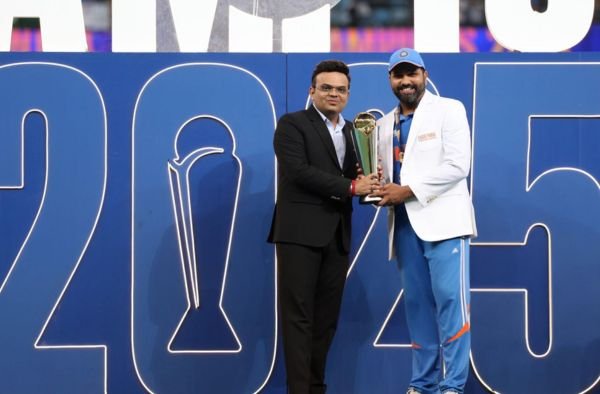Cricket has come a long way, evolving from a traditional sport into a global spectacle. But with the rapid rise of franchise leagues and packed schedules, international cricket is facing an uncertain future. To tackle these challenges, the World Cricket Association (WCA) has pitched a bold idea: protected international windows.
But what does this mean, and why is it so important for the game we all love? Let’s break it down.

Why Is Cricket at a Crossroads?
Imagine your favorite band constantly touring different countries, playing back-to-back concerts with barely any breaks. At first, it sounds exciting—more matches, more action! But over time, players feel exhausted, some performances lose their magic, and fans can’t keep up with the overwhelming schedule.
This is exactly what’s happening in international cricket.
Franchise leagues like the Indian Premier League (IPL) and T20 tournaments bring in huge audiences and money. While this is great for the sport’s popularity, it also means that players must choose between playing for their national teams or earning big bucks in private leagues.
Many cricket boards are struggling to keep their best players for international matches, and fans are increasingly divided between supporting their national teams and following franchise leagues.
So, how do we strike a balance between franchise cricket and keeping the international game strong? That’s where WCA’s proposal comes in.
What Are Protected International Windows?
In simple terms, protected international windows would set aside dedicated time in the cricket calendar where international matches take priority.
This means:
– No clashes with franchise leagues during these periods, ensuring top players remain available for their national teams.
– A clear structure that allows teams to plan tours, series, and tournaments without disruptions.
– More opportunities for smaller cricketing nations to compete without losing their players to lucrative leagues.
Think of it as a “family dinner rule”—no matter how busy everyone gets, there’s a set time in the schedule where everyone comes together.
Why Does Cricket Need This?
1. Protecting the Legacy of International Cricket
There’s something special about seeing countries battle it out on the big stage—whether it’s the Ashes, the Border-Gavaskar Trophy, or a thrilling World Cup match.
But if international cricket keeps losing top players to franchise leagues, matches won’t be as competitive. Imagine watching an India vs. Australia Test series without its biggest stars—it just wouldn’t feel the same.
Protected windows would ensure that players remain committed to their national teams, keeping international rivalries alive.
2. Preventing Player Burnout
Modern cricket demands a lot from players. With non-stop T20 leagues, Test matches, and ODIs, their bodies and minds take a beating.
Many top cricketers—including players like Ben Stokes and Trent Boult—have already started picking and choosing formats because playing everything is impossible.
By organizing the calendar efficiently with protected windows, players can balance international and franchise commitments without risking their health.
3. Keeping All Cricket Nations Competitive
Let’s be honest—cricket is currently dominated by a few big nations with strong financial backing.
Smaller countries like West Indies, Sri Lanka, and Afghanistan often struggle to retain their best players because franchise cricket offers bigger paychecks. This weakens their national teams and makes international tournaments one-sided.
Protected windows could help level the playing field, giving all nations a fair shot by making international cricket financially and structurally sustainable.
Challenges in Making This Happen
Of course, change isn’t easy. There are some hurdles to implementing protected international windows:
– Franchise Leagues Bring Big Money: The IPL and other T20 leagues are massive revenue generators. Convincing them to adjust their schedules won’t be simple.
– Player Preferences: Many players prefer short, high-paying leagues over long international commitments. Finding a balance will take careful planning.
– Cricket Boards’ Conflicting Interests: Every cricket board has its own priorities, and reaching a global agreement could be difficult.
But if cricket wants to secure its future, these hurdles must be overcome.
What Does This Mean for Cricket Fans?
For fans, this proposal could bring some much-needed clarity and excitement to the cricket calendar.
– No more overlapping series—you won’t have to choose between watching an IPL match or an India-Pakistan showdown.
– More star players in international games—imagine every major tournament featuring the best talent in the world.
– Better structured seasons—you’ll know exactly when to expect ODIs, Tests, and T20s, making it easier to follow the game.
In short, protected international windows could ensure a strong, balanced, and exciting future for cricket.
Final Thoughts: Can This Save Cricket?
Cricket is evolving, and change is inevitable. While franchise leagues have revolutionized the game, we must ensure that international cricket remains the heartbeat of the sport.
The WCA’s proposal for protected international windows is a step in the right direction. It offers a structured calendar, protects player workload, and ensures international cricket stays relevant.
Will it be easy to implement? No.
Will it solve all of cricket’s problems? Probably not overnight.
But if the cricketing world comes together, this could be the blueprint for a well-balanced and sustainable future.